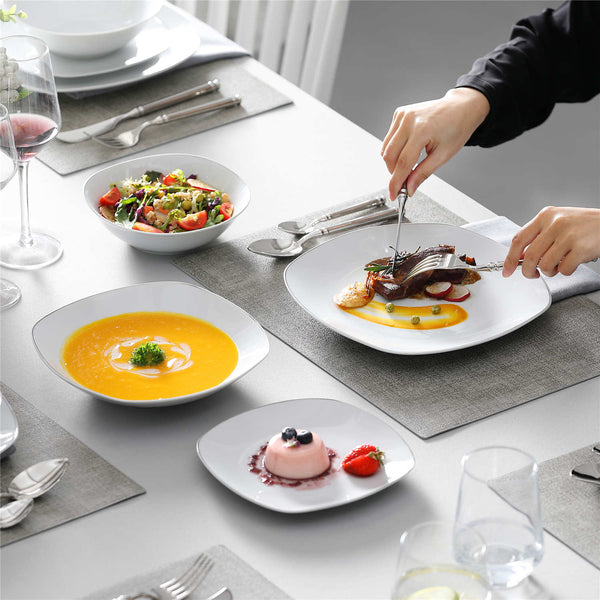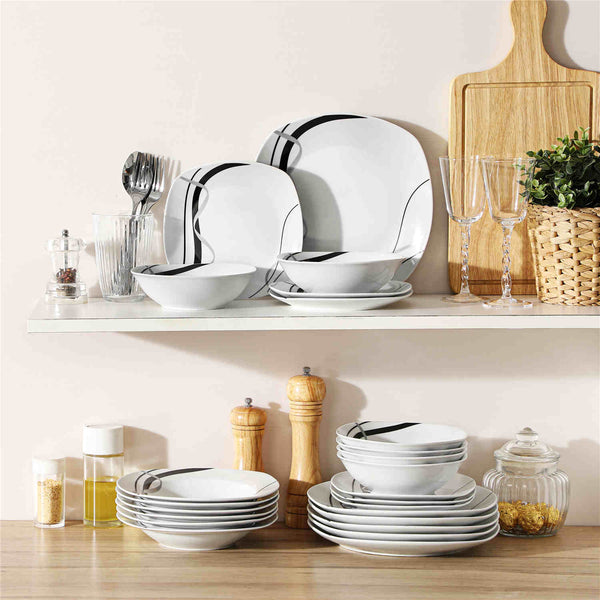Is Porcelain Truly the Best Lightweight Option for Your Home?
Navigation
- The basics of porcelain
- Weight comparison of porcelain with other common materials
- Applications of porcelain in home designs
- Practical considerations of porcelain
- Does lighter mean more fragile?
- Technological advancements in porcelain
- Problem-solving with porcelain
Porcelain is commonly perceived as a lightweight material mainly due to its delicate and soft appearance. This material has a very fine composition with firing at a very high temperature. However, this perception can be misleading to a certain extent. The porcelain material can vary widely in terms of weight depending on its density, thickness and effectiveness in the manufacturing process.
While discovering the porcelain’s suitability for different home applications, it is quite crucial to assess its weight characteristics. The lightweight of porcelain makes it perfect for the manufacturing of delicate utensils such as teacups and saucers etc. Porcelain lightweight dinnerware pieces are very famous. These dinnerware pieces are considered very elegant because of their light and soft touch.
On the other hand, a slightly heavier porcelain is used in the manufacturing of dinner plates and platters where sustainability and durability is the key. By deeply evaluating the porcelain’s weight characteristics, you can determine its suitability for various home applications. But first, it is important for you to understand what porcelain is and how it is different from other types of ceramics.
The basics of porcelain
Porcelain is a type of ceramic material made by mixing fine clay and other minerals at a very high temperature high-temperature level. This material is famous for its white color, durability, translucency, and unmatched strength.
The porcelain material is made from a type of clay known as Kaolin that is famous for its plasticity. This clay is usually mixed with other types of clay to improve its strength and properties. Feldspar is another common mineral used in the manufacturing of porcelain. It helps in lowering the melting temperature of the clay mixture. It also plays a crucial role in giving the final product a smooth and refined texture.
Additionally, silica is a material that helps in strengthening porcelain and improves its resistance to heat and other chemicals. It also plays a major role in reducing the shrinkage during the firing process.
It is significant for you to understand the distinction between porcelain and other types of ceramics. Well! The major distinction lies in the composition and firing process. As mentioned earlier, porcelain is fired at higher temperature as compared to other types of ceramics. The firing at high temperature results in the formation of denser and more durable material.
This firing also gives porcelain some special characteristics, such as white color and translucency, that further increase its beauty and utility.
Weight comparison of porcelain with other common materials
Porcelain is generally lighter than many other common materials used in home settings, such as glass, metals, and plastic. However, the actual weight can vary depending on the size of the porcelain item.
If we compare, glass can be heavier as compared to porcelain especially when it is in thicker forms such as glassware and other decorative items. Metal is also heavier than porcelain though there are some variations depending on the specific type and thickness of the metal. Some types of plastics are designed to mimic the appearance and feel of porcelain and can be lighter than actual porcelain.
The perceived lightness of porcelain can vary depending on the overall size and thickness of the porcelain item. Smaller porcelain pieces, such as teacups or saucers, may seem lighter, while larger pieces, such as dinner plates or serving bowls, may appear heavier. This variation in perceived lightness can prominently impact how different porcelain items are used in homes.
Applications of porcelain in home designs
The light weight of porcelain can be a huge advantage in different home design scenarios:
Hanging wall decorations
The light weight of porcelain makes it ideal for different hanging wall decorations such as tiles and art pieces. The delicacy of porcelain adds a very elegant and sophisticated touch to the walls without requiring any heavier support.
Delicate dinnerware
The lightness of porcelain also enhances the dining experience. Fine porcelain dinnerware is ideal for different formal and informal gatherings and occasions. Lightweight porcelain dinnerware is easier and more convenient to handle. It also creates a very refined and elegant dining table look.
Decoration pieces
The lightweight of porcelain also makes it suitable for different decorative pieces such as bowls and vases, etc. The versatility of porcelain makes it ideal for different items in home décor.
On the other hand, heavier materials are generally used in outdoor situations such as:
Structural support
For architectural elements, heavier materials such as stone or concrete are usually preferred for their strength and stability.
Outdoor furnishing
For outdoor situations, heavier materials such as aluminum, stone, or iron are usually preferred. These materials are commonly used in outdoor furniture and other decorative elements.
Practical considerations of porcelain
The light weight of porcelain makes it easier to handle. It enhances the user’s experience and makes the serving and cleaning process easier and more manageable. While porcelain is delicate and elegant, its lightweight nature makes it susceptible to breaking and cracking. It is quite important to handle porcelain pieces with care.
The lightweight nature of porcelain makes it portable. You can easily move porcelain pieces. It is advantageous when you are serving food or rearranging décor. However, it is also significant to ensure that you place the pieces on a stable surface; otherwise, it can lead to undesirable incidents.
Does lighter mean more fragile?
Porcelain is relatively easier to maintain. As the surface is non-porous, it is easier to wash and clean. However, its lightweight nature means it requires some extra handling and care to avoid any chips or cracks.
While lighter porcelain items may seem fragile, durability is related to quality and manufacturing process rather than to weight alone. High-quality porcelain is both lightweight and durable. It can withstand daily use if handled properly.
Technological advancements in porcelain
Technological advancements have led to new formulations of porcelain that are lighter and stronger. By smartly modifying the composition of clay, manufacturers can create porcelain with improved and advanced qualities.
Innovation in molding and firing process have made the porcelain products thinner and lighter without any compromise on strength and quality. These innovations allow for a more precise control of the final product's weight.
The cutting-edge processes have made porcelain more lightweight. For example, porcelain tiles are lighter in weight than the traditional tiles. These tiles hold more advanced manufacturing techniques by maintaining high strength and durability.
Problem-solving with porcelain
Lightweight porcelain items are easier to store and stack. These items are ideal for homes with limited storage space. Moreover, these items are easier to lift and move. They make cleaning and maintenance easier and even more manageable. It is convenient for larger items such as decorative bowls, etc.
Lightweight porcelain is also suitable for outdoor use. Outdoor furniture and other decorative items made of porcelain not only look elegant but also save excessive space. Overall, lightweight porcelain offers practical solutions to common household issues and can enhance functionality.
Porcelain is an ideal material for different types of products, such as dinnerware, tiles, outdoor furniture, and various decorative items, etc. The lightweight nature of porcelain depends on its quality and manufacturing procedure. Porcelain is used widely in different household applications. It offers some practical solutions and must be cherished to make your house look elegant and classy.











Leave a comment